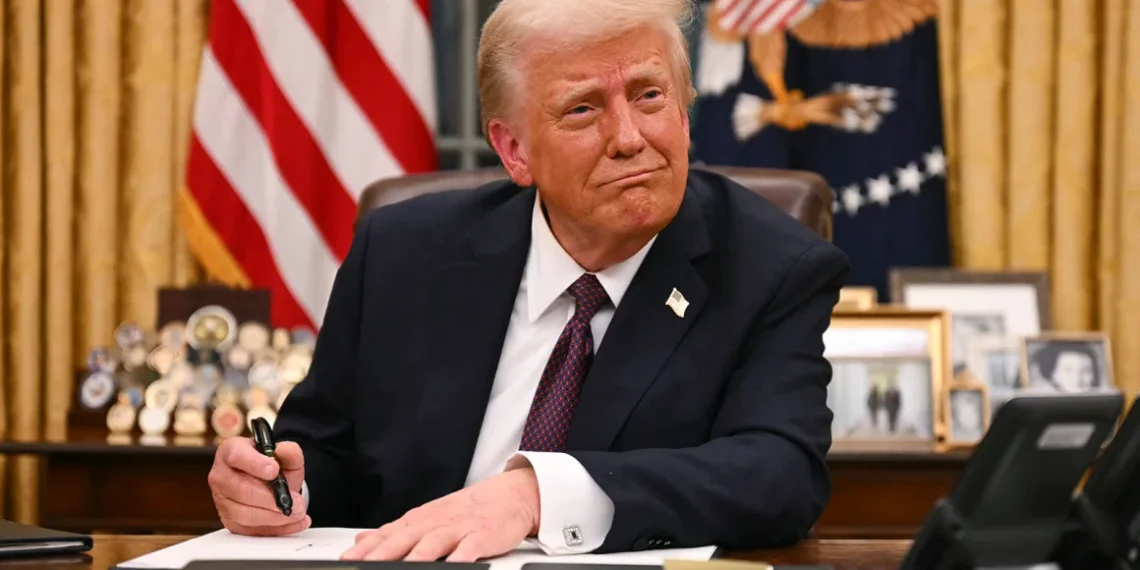What once seemed like a political bluff is rapidly evolving into a full-blown trade war.
U.S. President Donald Trump’s threat to impose tariffs on Canada, Mexico, and China has swiftly moved from idle rhetoric to reality, and it’s about to create shockwaves across borders.
The tariffs, set to launch on Tuesday, aside causing a mix of panic, anger and uncertainty, have threatened to wreck havoc to a decades-old partnership on trade in North America while further straining relations with China.
Yet, despite Trump’s bravado about the long-term benefits of these tariffs, it’s American voters who are likely to bear the heaviest burden.
During his election campaign, Trump promised to quickly reduce inflation and invigorate the American economy.
However, in pushing forward with these tariffs, he may have undermined that very promise, delivering a blow to the pocketbooks of those he vowed to protect. Analysts and experts are already warning of the devastating ripple effects on U.S. households.
Canada is the largest export market for 36 states and Mexico is the largest trading partner of the U.S.
Outside analyses make clear that Trump’s tariffs would hurt the voters that he intended to help.
An analysis by the Budget Lab at Yale shows that if the tariffs were to continue, an average U.S. household would lose roughly $1,245 in income this year, in what would be the overall equivalent of a more than $1.4 trillion tax increase over the next 10 years.
Trump acknowledged the sweeping tariffs he has imposed on Mexico, Canada and China may cause problems for Americans.
“We may have short term some little pain, and people understand that. But long term, the United States has been ripped off by virtually every country in the world.”
Donald Trump
Larry Summers, Treasury Secretary in the Clinton administration, said that the tariffs were a “self-inflicted wound to the American economy.”
Trump’s tariffs sparked retaliation from all three countries. Mexico and Canada have vowed levies of their own while China and Canada are seeking legal challenges.
In Canada, the department of finance published a list of US products imported into Canada that it will target with a 25% retaliatory tariff starting on Tuesday.
The list shows products that will be hit in the first round of retaliatory tariffs by Canada starting on Tuesday, and mounts to $30bn Canadian dollars’ worth of goods (about US$20bn).
The impacted products include tobacco, produce, household appliances, firearms and military gear.
Canada is also preparing for a second, broader round of retaliatory tariffs in 21 days that will target an additional C$125bn (US$86bn) worth of US imports.
The second list would include passenger vehicles, trucks, steel and aluminum products, certain fruits and vegetables, beef, pork, dairy products and more.
Trudeau has encouraged Canadians to buy more Canadian goods
EU Tariffs Loom
Donald Trump has threatened to widen the scope of his trade tariffs, repeating his warning that the European Union – and potentially the UK – will face levies, even as he conceded that Americans could bear some of the economic brunt of a nascent global trade war.
Trump told reporters that new tariffs on the EU will “definitely happen”, repeating previous complaints about the large US trade deficit with the bloc and his desire for Europe to import more American cars and agricultural products.
“It will definitely happen with the European Union, I can tell you that. I wouldn’t say there’s a timeline but it’s going to be pretty soon.”
Donald Trump
Trump appeared to take a softer line on the UK, citing a good relationship with prime minister Keir Starmer while saying tariffs still “might happen”. “The UK is out of line but I’m sure that one, I think that one can be worked out,” he said.
He brushed aside retaliatory measures from Canada, saying, “If they want to play the game, I don’t mind. We can play the game all they want.”
Trump said he plans to speak with his Canadian and Mexican counterparts on Monday.
READ ALSO: Rwanda-South Africa Diplomatic Crisis Over DRC’s M23 Conflict























